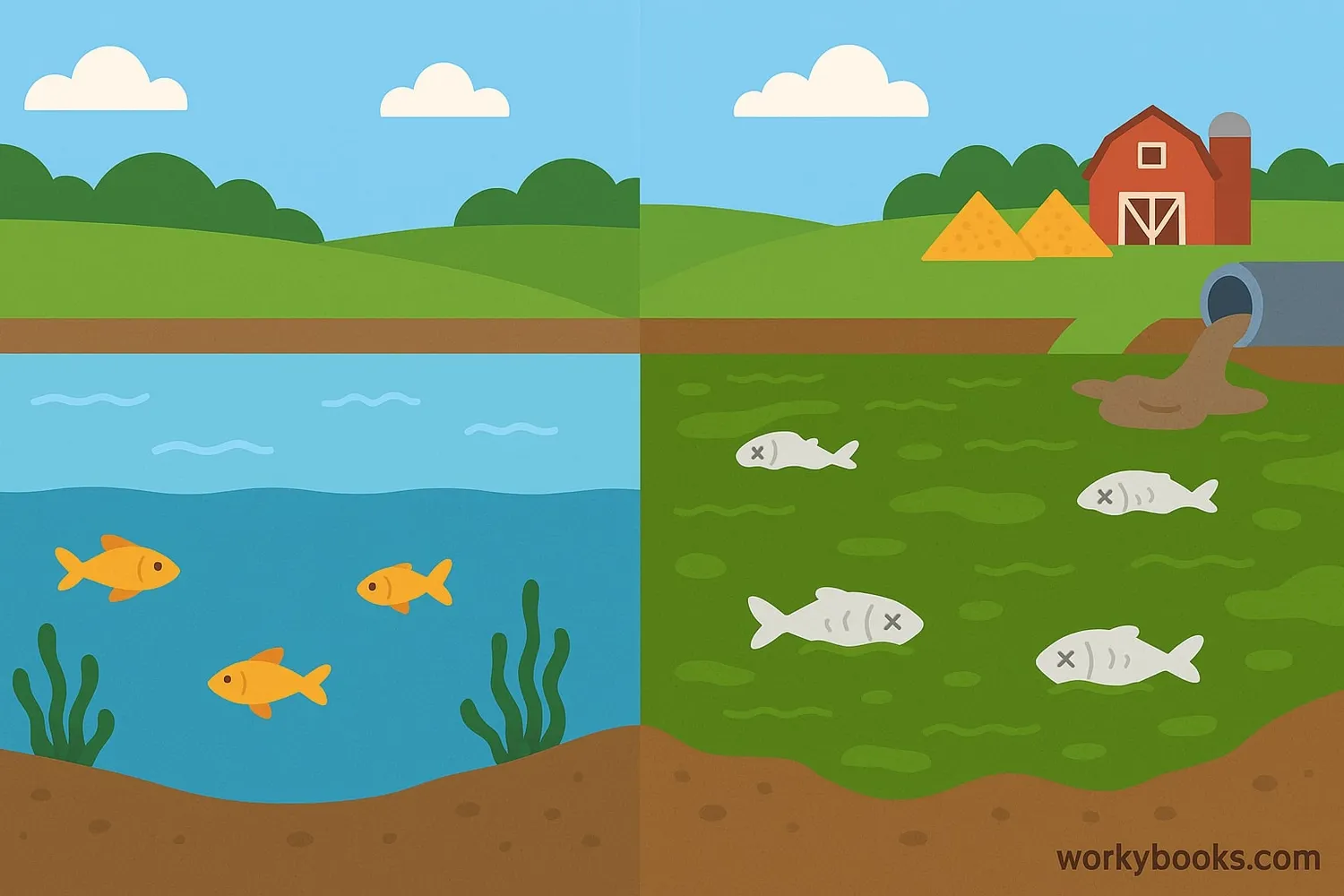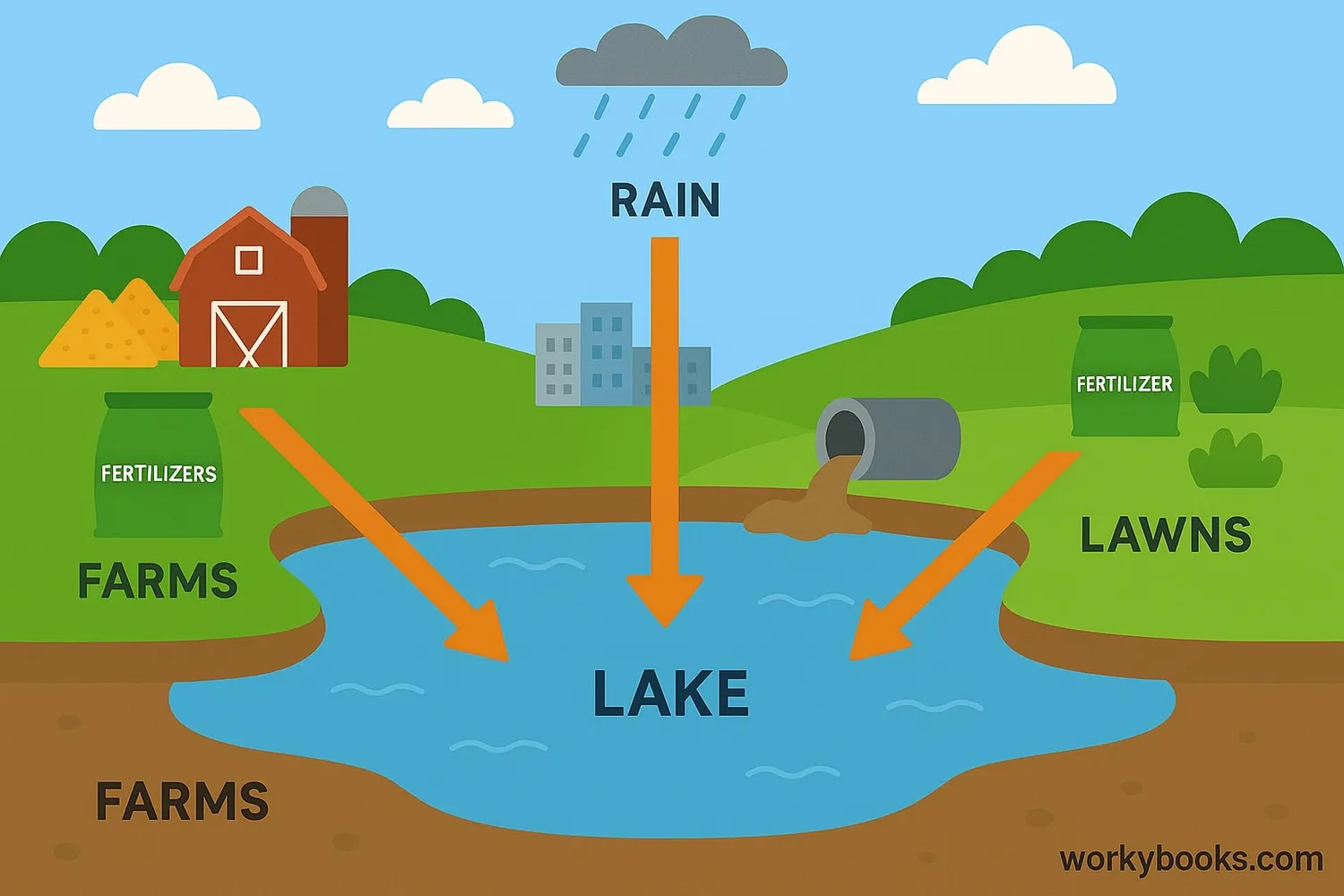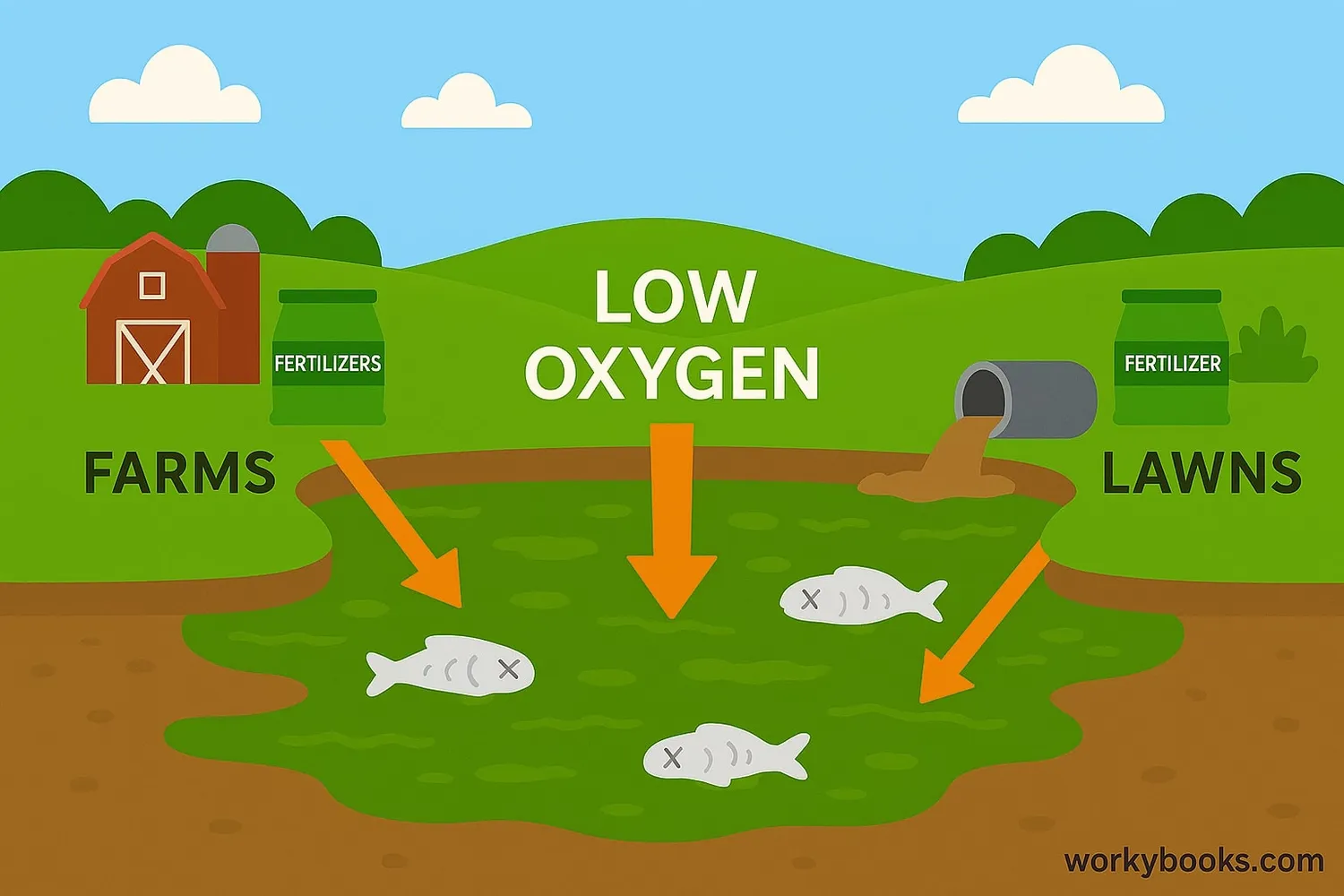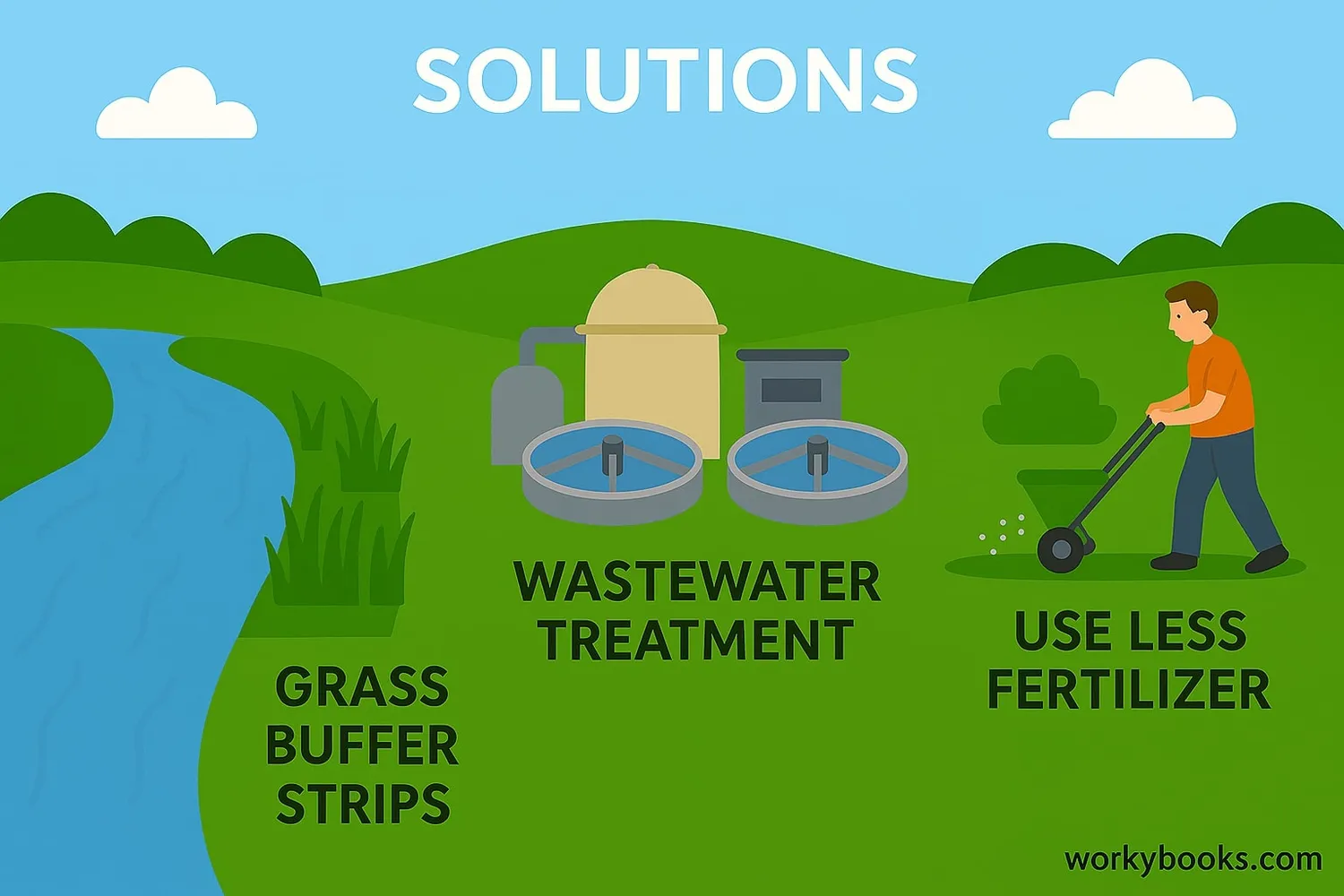Eutrophication - Definition, Examples, Quiz, FAQ, Trivia
Learn how nutrient pollution affects our lakes, rivers, and oceans
What is Eutrophication?

Eutrophication is a water pollution problem where too many nutrients like nitrogen and phosphorus enter lakes, rivers, or oceans. These extra nutrients cause excessive growth of algae and other plants.
Think of it like giving plants too much fertilizer. Just like garden plants grow big with fertilizer, algae in water grow out of control when they get too many nutrients. This causes thick green layers called algae blooms that cover the water surface.
While some nutrients are natural and good for aquatic ecosystems, too many cause serious problems for water quality and aquatic life.
Science Fact!
The word "eutrophication" comes from Greek words meaning "well-nourished" or "nutrient-rich."
Causes of Eutrophication

Eutrophication is mainly caused by human activities that add extra nutrients to water. The biggest sources are:
Farming
Fertilizers from fields wash into waterways during rain
Sewage
Wastewater from cities and towns contains nutrients
Lawn Care
Fertilizers from lawns and gardens wash into storm drains
Industrial Waste
Factories sometimes release nutrient-rich wastewater
Animal Waste
Manure from livestock farms washes into streams
When it rains, these nutrients get washed from land into nearby bodies of water. This is called runoff. Over time, the buildup of nitrogen and phosphorus causes the explosive growth of algae.
Effects of Eutrophication

Too many nutrients might sound good, but they cause serious problems for aquatic ecosystems:
Dead Zones
Algae die and decompose, using up oxygen and creating areas where fish can't survive
Water Quality
Water becomes cloudy, smelly, and unsafe for swimming or drinking
Toxic Blooms
Some algae produce toxins that poison animals and humans
The most serious effect is the creation of dead zones - areas in water bodies where oxygen levels drop so low that most aquatic life cannot survive. This process of oxygen depletion is called hypoxia.
When algae die and sink to the bottom, bacteria decompose them, using up oxygen in the process. This creates layers of water with very little oxygen, forcing fish to leave or die. In severe cases, entire aquatic ecosystems can collapse.
Solutions to Eutrophication

The good news is that we can prevent and even reverse eutrophication! Here are some solutions:
Better Farming
Precision farming to use only needed fertilizer
Buffer Zones
Planting vegetation along waterways to filter runoff
Wastewater Treatment
Upgrading treatment plants to remove nutrients
Responsible Lawn Care
Using less fertilizer and choosing phosphorus-free products
Restoration Projects
Cleaning up polluted water bodies and restoring wetlands
Wetlands are especially good at filtering nutrients from water before they reach lakes and rivers. Restoring wetlands is one of the most effective ways to combat eutrophication.
Everyone can help! Using less fertilizer on lawns, properly disposing of pet waste, and supporting clean water initiatives all make a difference in preventing nutrient pollution.
Eutrophication Quiz
Test your knowledge about eutrophication with this 5-question quiz!
Frequently Asked Questions
Here are answers to common questions about eutrophication:
Eutrophication Trivia
Discover fascinating facts about eutrophication and nutrient pollution:
Largest Dead Zone
The Gulf of Mexico dead zone is the largest in the United States, sometimes covering over 6,000 square miles - larger than the state of Connecticut!
Economic Cost
Eutrophication costs the U.S. economy over $2.2 billion annually in lost tourism, fishing revenue, and water treatment expenses.
Ancient Problem
The first recorded case of eutrophication dates back to ancient Greek and Roman times when sewage was discharged directly into the Mediterranean Sea.
Fish Impact
In the 1960s, eutrophication caused the collapse of the Lake Erie fishery, which once supplied 50% of America's fresh fish.


